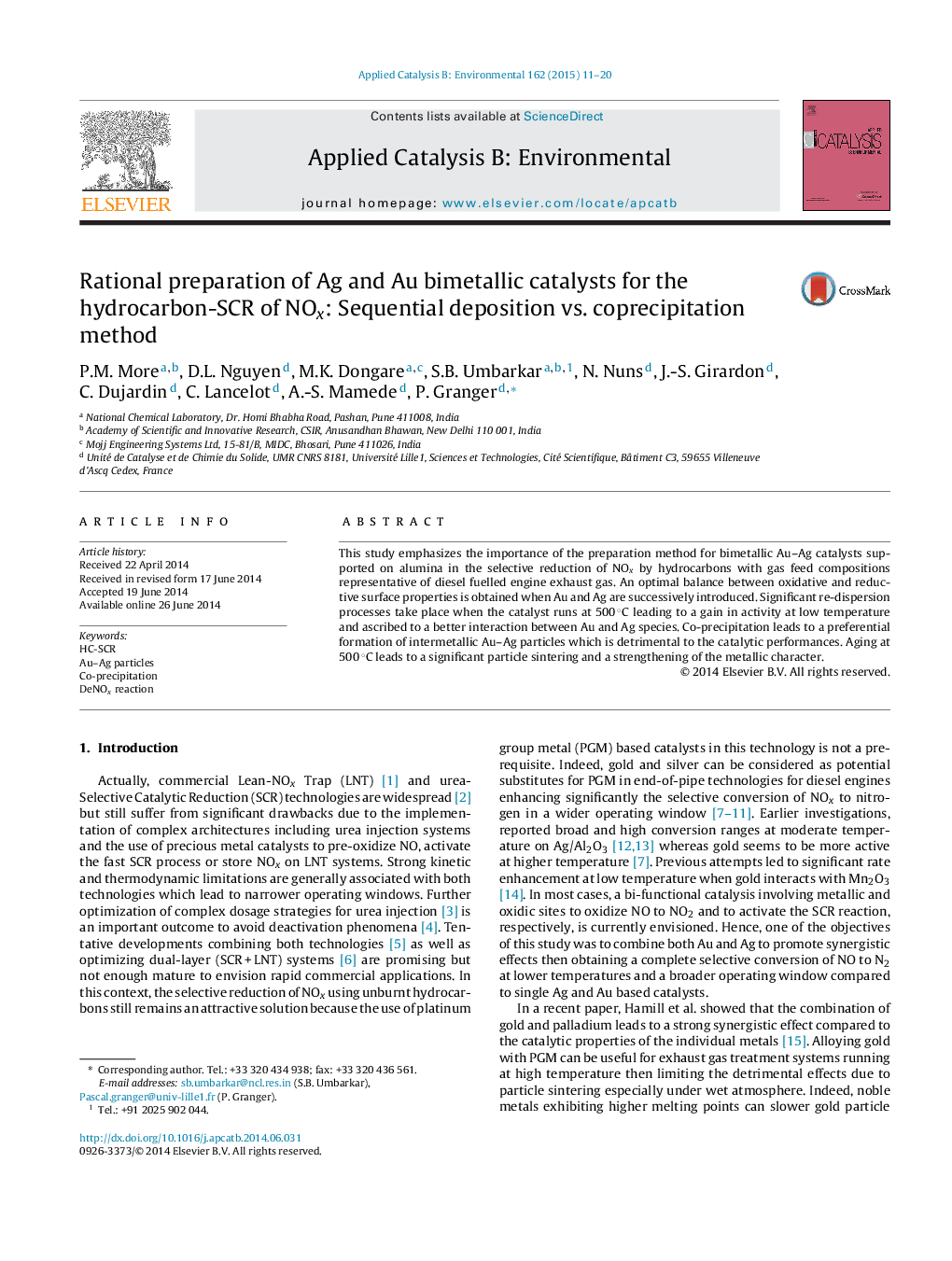| Article ID | Journal | Published Year | Pages | File Type |
|---|---|---|---|---|
| 45616 | Applied Catalysis B: Environmental | 2015 | 10 Pages |
•Detrimental effect of alloyed Au–Ag particles in hydrocarbon SCR of NOx.•Optimal catalytic performance of bimetallic Au–Ag catalysts prepared by successive impregnation.•Evidence of Ag redispersion during aging from combined XPS/ToF-SIMS/TEM analysis.•Coexistence of electrophilic and metallic Au and Ag species to promotes NO2 formation and sequential selective reduction to N2.
This study emphasizes the importance of the preparation method for bimetallic Au–Ag catalysts supported on alumina in the selective reduction of NOx by hydrocarbons with gas feed compositions representative of diesel fuelled engine exhaust gas. An optimal balance between oxidative and reductive surface properties is obtained when Au and Ag are successively introduced. Significant re-dispersion processes take place when the catalyst runs at 500 °C leading to a gain in activity at low temperature and ascribed to a better interaction between Au and Ag species. Co-precipitation leads to a preferential formation of intermetallic Au–Ag particles which is detrimental to the catalytic performances. Aging at 500 °C leads to a significant particle sintering and a strengthening of the metallic character.
Graphical abstractFigure optionsDownload full-size imageDownload as PowerPoint slide
